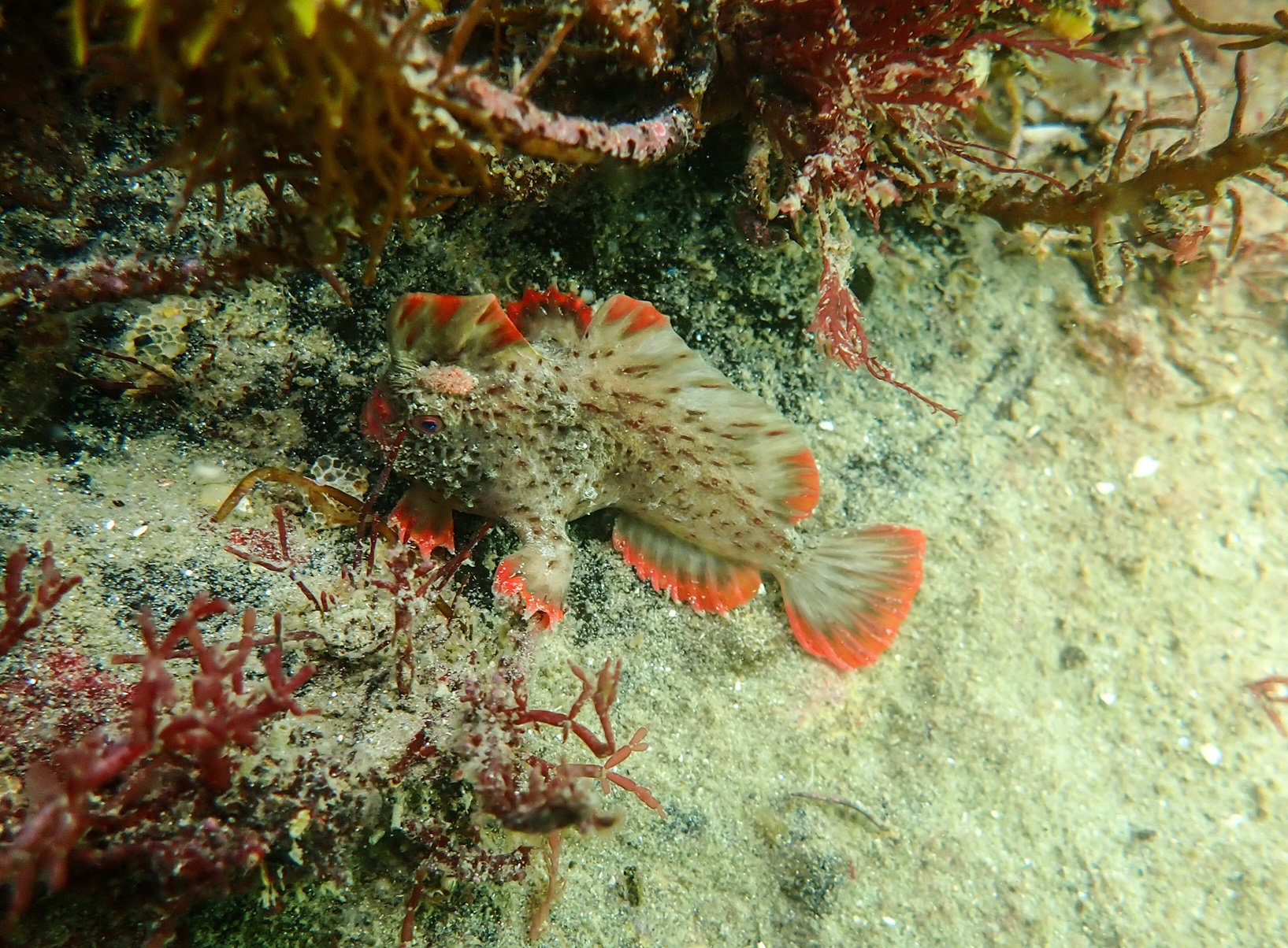
Twenty-five red handfish have arrived at IMAS Taroona in a rescue effort to safeguard them against the predicted high sea and atmospheric temperatures this summer.
“The home of the red handfish is facing severe habitat loss and degradation, primarily driven by an increase in the abundance of native urchins which have overgrazed their habitat,” said IMAS researcher Dr Jemina Stuart-Smith, who co-leads the red handfish research and conservation program at the University of Tasmania’s Institute for Marine and Antarctic Studies (IMAS).
“The area already faces multiple threats – it’s close to urban areas and is impacted by run-off, direct disturbance through boating and anchoring, and of course climate change impacts.”
Scientists raised the alarm in the face of the predicted marine heatwave which, coupled with high atmospheric temperatures this summer, could be a serious and significant threat to the species’ existence.
“Habitat degradation means there’s a loss of refuges and microhabitats, creating a disconnected habitat that makes it increasingly difficult for the handfish to adjust to water temperature stress,” Dr Stuart-Smith said.

The Australian Government’s Department of Climate Change, Energy, the Environment and Water (DCCEEW), with the support of the Tasmanian Government, hosted an emergency workshop with various stakeholders to assess the data and consider the risks.
Dr Andrew Trotter, who leads the conservation breeding project for red handfish at IMAS, said a strong consensus emerged from the workshop – to relocate a proportion of the population into captivity, to reduce the risk associated with the predicted high sea temperatures.
“This strategy certainly isn’t without risk, but the handfish relocation from sea to aquariums was quite seamless, and they settled into their new homes very nicely.”
“They were feeding very well within a day, and our aim now is to keep them healthy and content until it’s safe to return them. We don’t want to keep them any longer than necessary – they’re wild animals and belong in the sea,” Dr Trotter said.
“We have highly experienced staff looking after the fish seven days a week, and a 24-hour call-out roster. So we believe they are quite safe with us – but there is certainly a feeling of heightened responsibility among our team, given how small the wild population is.”
 Dr Stuart-Smith said it was a difficult decision to make but that, despite the risk, it was the right approach.
Dr Stuart-Smith said it was a difficult decision to make but that, despite the risk, it was the right approach.
“Our temperature data from site showed us that this summer has already well exceeded previous temperature maximums. It is experiencing unprecedented high temperatures, so we can only assume that this additional stressor will impact the already fragile population,” Dr Stuart-Smith said.
IMAS scientists plan to hold the red handfish in captivity until winter, but their release will depend on their habitat being suitable for them to return to.
“As well as keeping them safe until then, we’re very focused on habitat restoration and management at red handfish sites. It’s important that we have a suitable habitat we can return them to.”
 This important work is carried out with support from Tasmania’s Seahorse World and in consultation with the National Handfish Recovery Team and the Tasmanian Department of Natural Resources and Environment (NRE Tas). IMAS research into red handfish population recovery is made possible through funding from the Australian Government’s Department of Climate Change, Energy, the Environment and Water (DCCEEW), with broader project funds provided by Foundation for Australia’s Most Endangered species and the generous donors who support the Handfish Conservation Project.
This important work is carried out with support from Tasmania’s Seahorse World and in consultation with the National Handfish Recovery Team and the Tasmanian Department of Natural Resources and Environment (NRE Tas). IMAS research into red handfish population recovery is made possible through funding from the Australian Government’s Department of Climate Change, Energy, the Environment and Water (DCCEEW), with broader project funds provided by Foundation for Australia’s Most Endangered species and the generous donors who support the Handfish Conservation Project.
FAST FACTS:
 Threats to Red handfish: habitat loss and destruction from native sea urchins overgrazing seaweeds, pollution and siltation, coastal development, human disturbance (boating and diving), introduced species and climate change.
Threats to Red handfish: habitat loss and destruction from native sea urchins overgrazing seaweeds, pollution and siltation, coastal development, human disturbance (boating and diving), introduced species and climate change.Images from top:
Published 31 January 2024